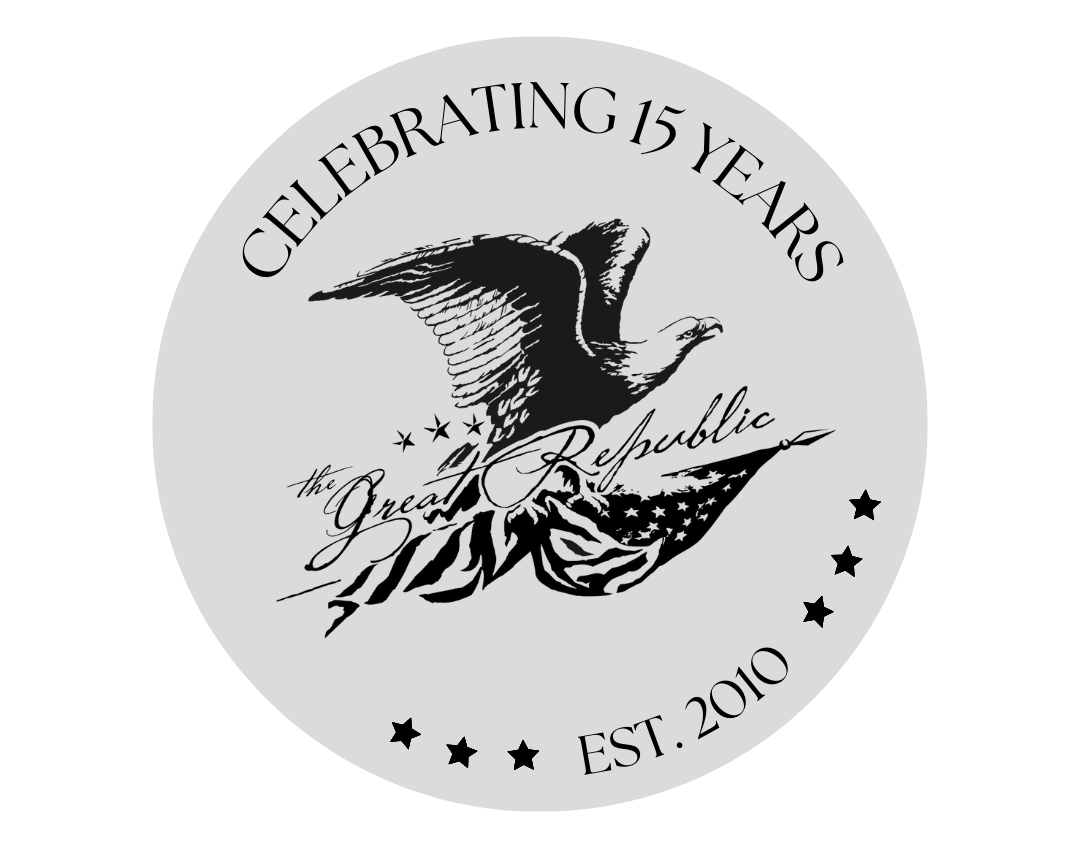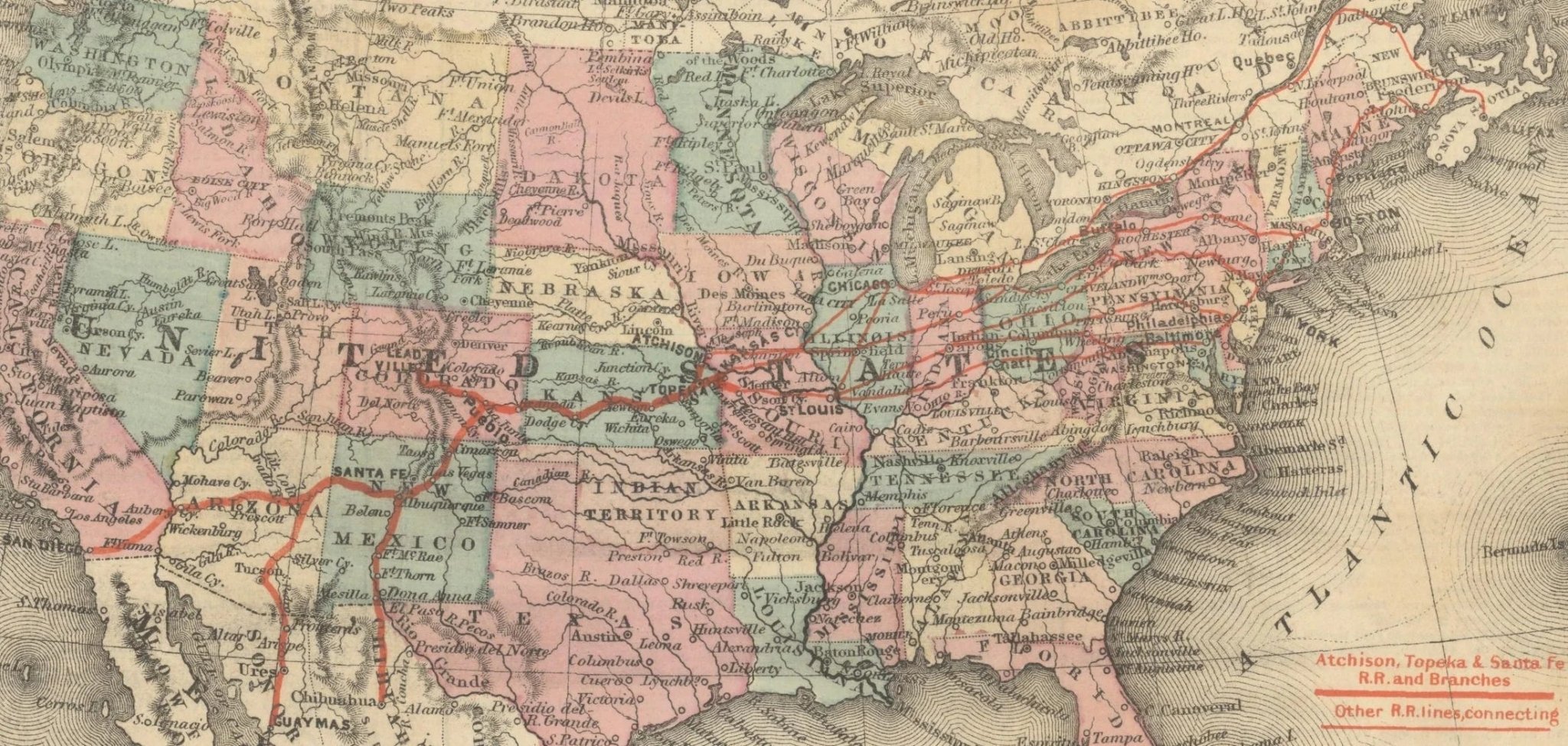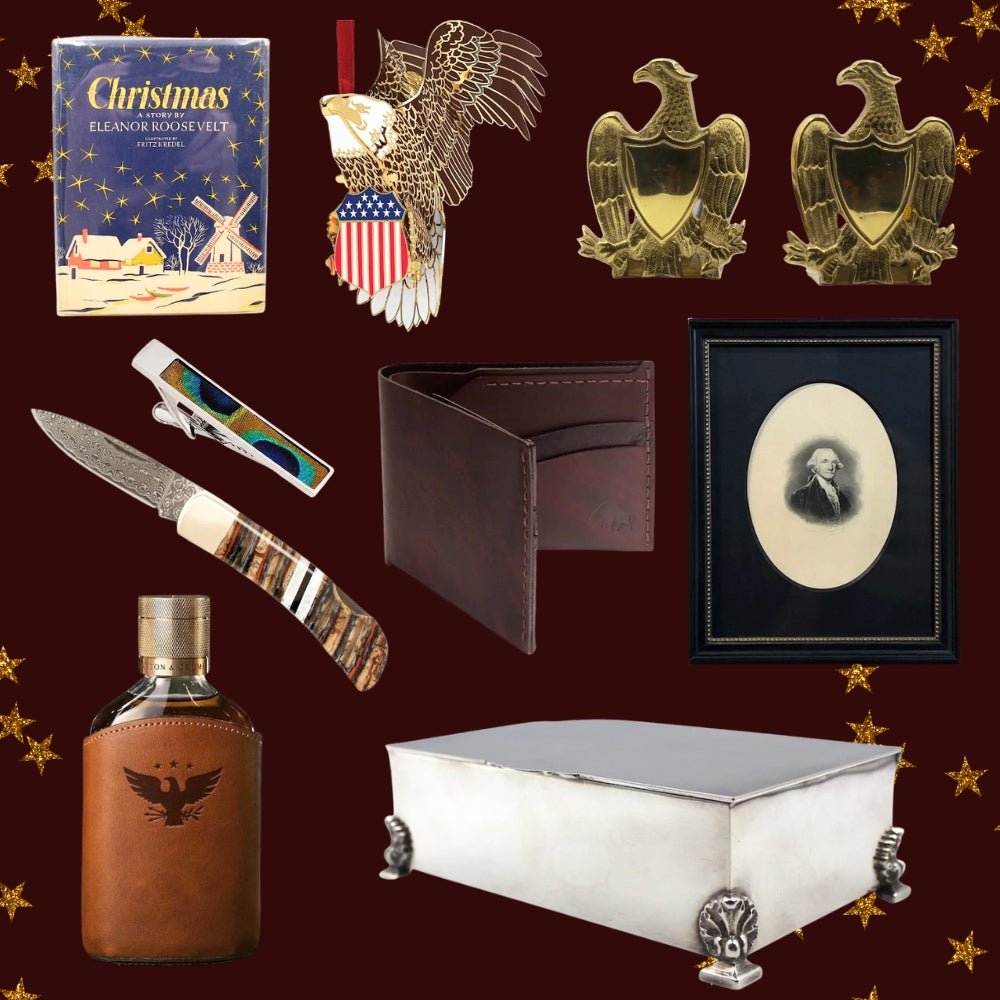A George Washington Memorial Engraving, with an Interesting Publication History
Hanging on our shop walls is this George Washington memorial engraving by John I. Donlevy. Titled Sacred to the Memory of the Illustrious Champion of Liberty, General George Washington, First President of the United States, this stipple engraving has a large portrait of Washington at center, surrounded by elaborate calligraphic decoration and text. Above the portrait is an engraved eagle, with laurel and the American flag in its beak and arrows clutched in its talons. The elaborate border lettering is executed in the typical variety of styles with cursive flourishes, shadows, italics, and blackletter. The result is a stunning and artful memorial to our first President.
After Washington’s death in 1799, many engravers and publishers rushed to create prints of Washington’s likeness for the grieving populace. Washington “had played such a central role in the extraordinary events of a quarter century that his death was an event of great emotional consequence in America, affecting the very identity of the nation… In honoring Washington, the nation was honoring its own history” (Wick, 70). The memorial prints served to remember Washington for his accomplishments, great vision, and character. Engravers surrounded their portraits with poems, allegorical and patriotic elements, and symbols of the man’s greatness, as well as the rich imagery found in mourning art, like the obelisk, urn, angels, and weeping figures.
John Donlevy’s memorial engraving was first published in 1838; yet this is the second state published in 1870. Interestingly, this second state was reissued in the wake of Abraham Lincoln’s death, when the mourning American populace yearned for images of not only Abraham Lincoln, but also images of George Washington and prints of Washington and Lincoln together.
After his assasination in 1865, Lincoln, like Washington, was “elevated into the realm of martyrdom, a metamorphosis immediately visible in a rush of …prints that bore an eerie resemblance to those that had depicted…Washington” (Holzer, 1994). Whereas Washington was portrayed as the father of the Union in early prints, Lincoln became cast as the heroic preserver of the Union. Paired double-cameo portraits of the two presidents became popular, like in P. S. Duval & Son’s Champions of Liberty 1865 lithograph and Columbia’s Noblest Sons printed by Kimmel and Forrester that same year.
Now linked in the memory and hearts of the American public, Lincoln portrait sales spurred on Washington portrait sales, and vice versa. Publishers even went so far as to re-use earlier Washington print designs to meet the public demand for Lincoln prints. In 1865, Gilman Russel, a self-described “professor of penmanship” engraved the words of the Emancipation as the background for this celebratory Lincoln portrait; a very similar design was used for his Washington “Declaration of Independence” print issued nine years earlier in 1856.

Equally rich in symbolism and artistic flourish, Donlevy's memorial print of Washington serves as an example of the enduring and cyclical power of art. Published twice, both in times of collective mourning and reflection, the engraving offered the public a means of remembrance, celebration, and connection to a larger national story.







